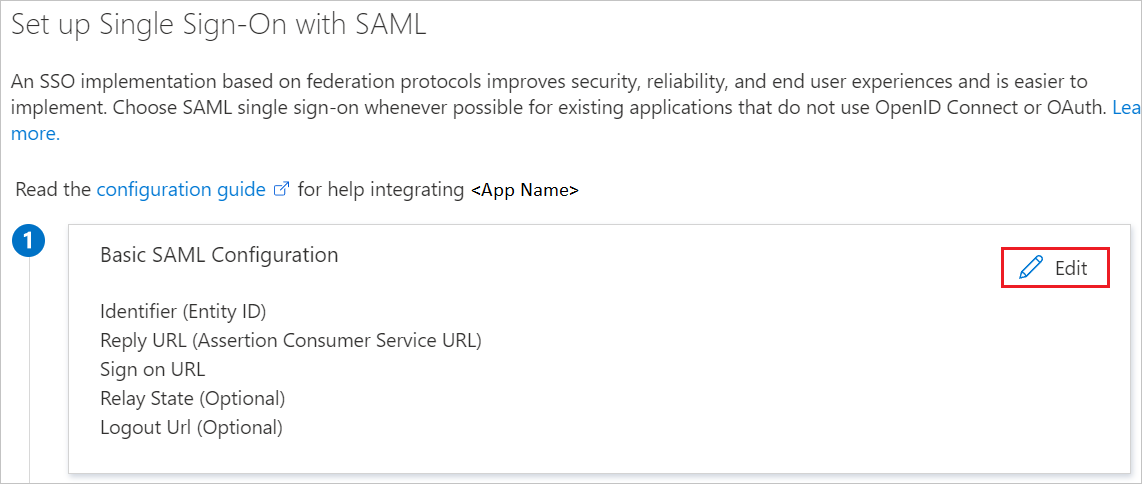Tutorial: Microsoft Entra SSO integration with Profit.co
In this tutorial, you'll learn how to integrate Profit.co with Microsoft Entra ID. When you integrate Profit.co with Microsoft Entra ID, you can:
- Control in Microsoft Entra ID who has access to Profit.co.
- Enable your users to be automatically signed in to Profit.co with their Microsoft Entra accounts.
- Manage your accounts in one central location, the Azure portal.
To get started, you need the following items:
- A Microsoft Entra subscription. If you don't have a subscription, you can get a free account.
- Profit.co single sign-on (SSO) enabled subscription.
In this tutorial, you configure and test Microsoft Entra SSO in a test environment.
- Profit.co supports IDP initiated SSO.
To configure the integration of Profit.co into Microsoft Entra ID, you need to add Profit.co from the gallery to your list of managed SaaS apps.
- Sign in to the Microsoft Entra admin center as at least a Cloud Application Administrator.
- Browse to Identity > Applications > Enterprise applications > New application.
- In the Add from the gallery section, type Profit.co in the search box.
- Select Profit.co from the results panel, and then add the app. Wait a few seconds while the app is added to your tenant.
Alternatively, you can also use the Enterprise App Configuration Wizard. In this wizard, you can add an application to your tenant, add users/groups to the app, assign roles, as well as walk through the SSO configuration as well. Learn more about Microsoft 365 wizards.
Configure and test Microsoft Entra SSO with Profit.co by using a test user called B.Simon. For SSO to work, establish a linked relationship between a Microsoft Entra user and the related user in Profit.co.
Here are the general steps to configure and test Microsoft Entra SSO with Profit.co:
- Configure Microsoft Entra SSO to enable your users to use this feature.
- Create a Microsoft Entra test user to test Microsoft Entra single sign-on with B.Simon.
- Assign the Microsoft Entra test user to enable B.Simon to use Microsoft Entra single sign-on.
- Configure Profit.co SSO to configure the single sign-on settings on the application side.
- Create a Profit.co test user to have a counterpart of B.Simon in Profit.co. This counterpart is linked to the Microsoft Entra representation of the user.
- Test SSO to verify whether the configuration works.
Follow these steps to enable Microsoft Entra SSO.
Sign in to the Microsoft Entra admin center as at least a Cloud Application Administrator.
Browse to Identity > Applications > Enterprise applications > Profit.co application integration page, find the Manage section. Select single sign-on.
On the Select a single sign-on method page, select SAML.
On the Set up single sign-on with SAML page, select the pencil icon for Basic SAML Configuration to edit the settings.

In the Basic SAML Configuration section, the application is preconfigured and the necessary URLs are already pre-populated in Azure. Users need to save the configuration by selecting the Save button.
On the Set up single sign-on with SAML page, in the SAML Signing Certificate section, select the Copy button. This copies the App Federation Metadata Url and saves it on your computer.

In this section, you create a test user called B.Simon.
- Sign in to the Microsoft Entra admin center as at least a User Administrator.
- Browse to Identity > Users > All users.
- Select New user > Create new user, at the top of the screen.
- In the User properties, follow these steps:
- In the Display name field, enter
B.Simon. - In the User principal name field, enter the username@companydomain.extension. For example,
B.Simon@contoso.com. - Select the Show password check box, and then write down the value that's displayed in the Password box.
- Select Review + create.
- In the Display name field, enter
- Select Create.
In this section, you enable B.Simon to use Azure single sign-on by granting access to Profit.co.
- Browse to Identity > Applications > Enterprise applications.
- In the applications list, select Profit.co.
- In the app's overview page, find the Manage section, and select Users and groups.
- Select Add user. In the Add Assignment dialog box, select Users and groups.
- In the Users and groups dialog box, select B.Simon from the users list. Then choose the Select button at the bottom of the screen.
- If you're expecting any role value in the SAML assertion, in the Select Role dialog box, select the appropriate role for the user from the list. Then choose the Select button at the bottom of the screen.
- In the Add Assignment dialog box, select Assign.
To configure single sign-on on the Profit.co side, you need to send the App Federation Metadata URL to the Profit.co support team. They configure this setting to have the SAML SSO connection set properly on both sides.
In this section, you create a user called B.Simon in Profit.co. Work with the Profit.co support team to add the users in the Profit.co platform. You can't use single sign-on until you create and activate users.
In this section, you test your Microsoft Entra single sign-on configuration with following options.
Click on Test this application, and you should be automatically signed in to the Profit.co for which you set up the SSO.
You can use Microsoft My Apps. When you click the Profit.co tile in the My Apps, you should be automatically signed in to the Profit.co for which you set up the SSO. For more information, see Microsoft Entra My Apps.
Once you configure Profit.co you can enforce session control, which protects exfiltration and infiltration of your organization’s sensitive data in real time. Session control extends from Conditional Access. Learn how to enforce session control with Microsoft Defender for Cloud Apps.